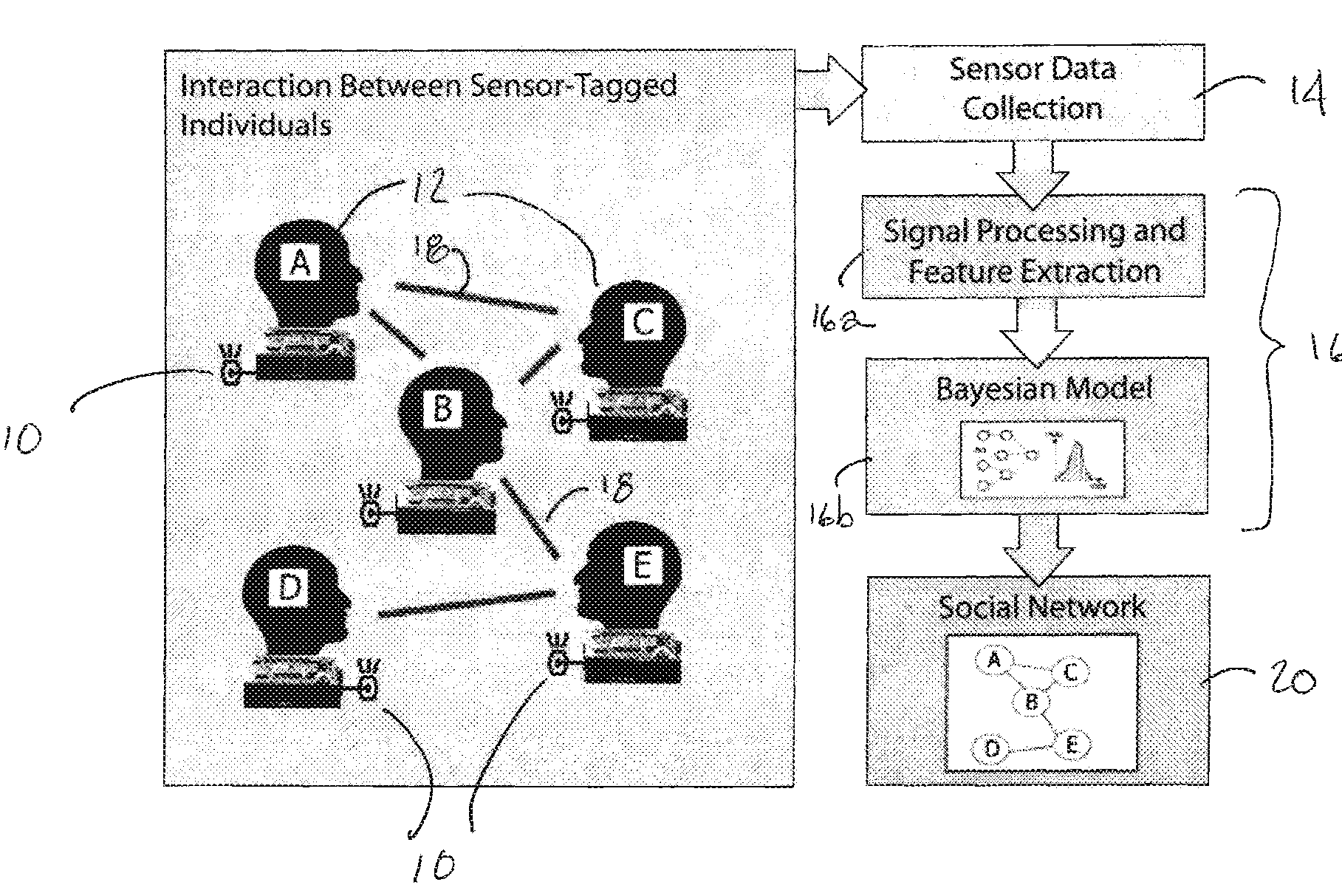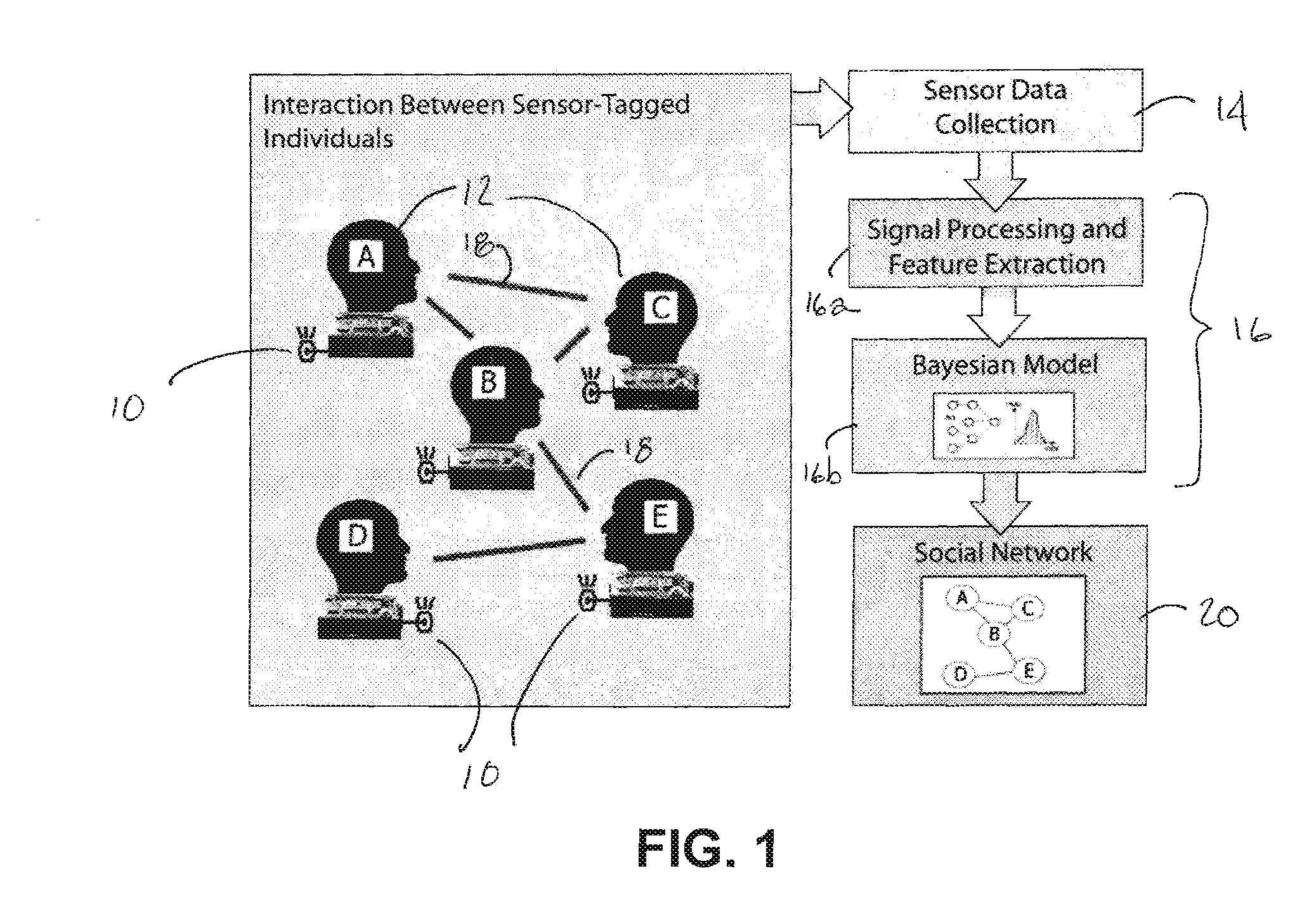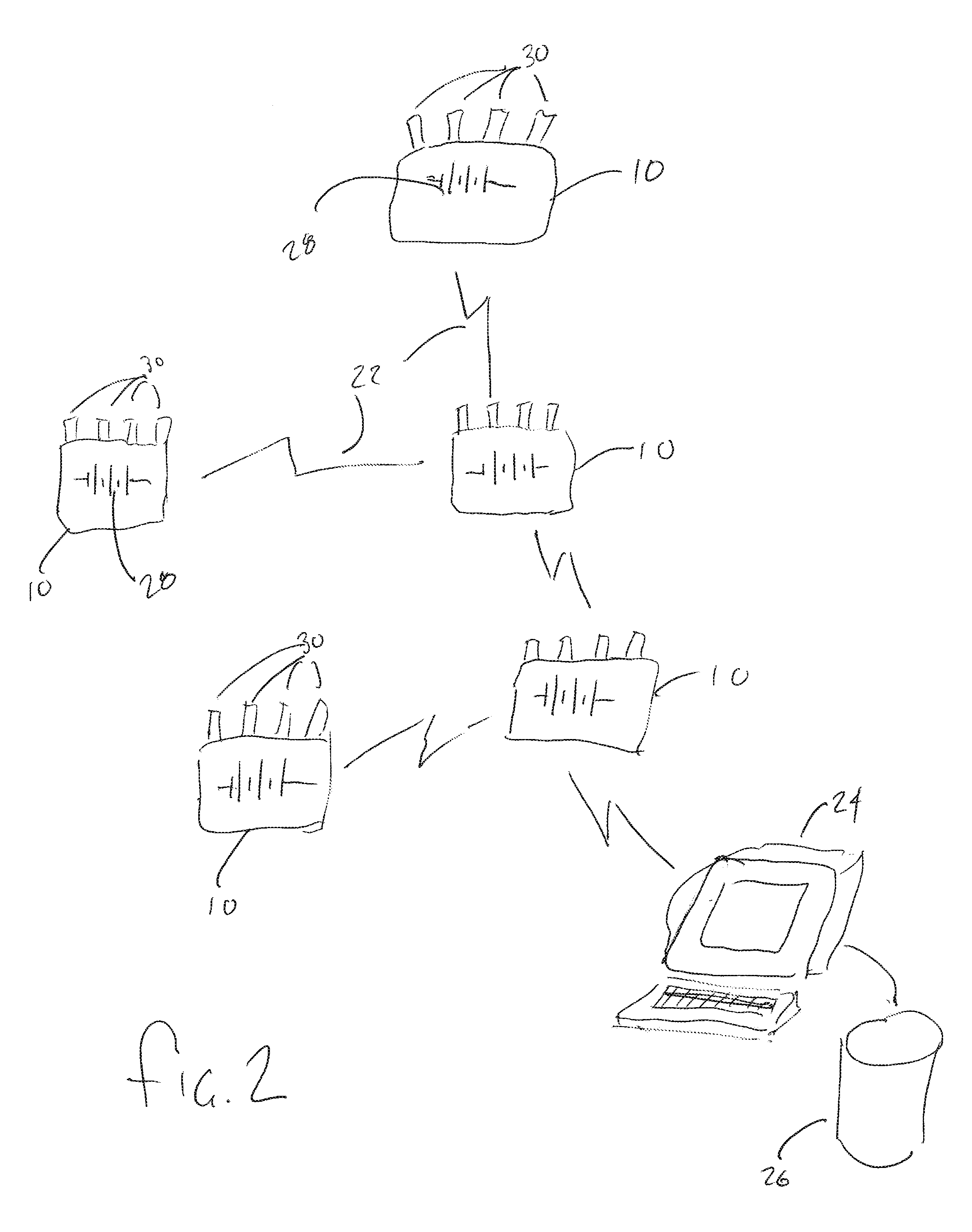Sensor based monitoring of social networks
a social network and sensor technology, applied in the field of social network sensor based monitoring, can solve the problems of face-to-face interactions between people, inability to incorporate data obtained based on physical proximity, and new difficulties, and achieve the effects of reducing the number of people, and increasing the difficulty of detecting and monitoring discrete interactions within social networks
- Summary
- Abstract
- Description
- Claims
- Application Information
AI Technical Summary
Benefits of technology
Problems solved by technology
Method used
Image
Examples
Embodiment Construction
[0020]Now referring to the drawings, the method and system for detecting and monitoring discrete interactions within a social network is generally shown and illustrated in the figures. In the preferred embodiment, the system of the present invention is implemented in the form of a low power, wireless sensor-based system that is deployed in a manner that tracks relationships and interactions over time in a community of people. Turning now to FIG. 1, the system of the present invention can be seen generally to employ a plurality of sensor nodes 10 deployed across a group of people 12 to be monitored, a wireless network is established in an ad hoc basis across the plurality of sensor nodes 10, a data polling system 14 for collection of the data from the sensor nodes 10 and an analysis system 16 for reviewing the data collected from the sensor nodes 10 to determine when and where interactions 18 occurred within the group of people 12 to be monitored thereby identifying those interaction...
PUM
 Login to View More
Login to View More Abstract
Description
Claims
Application Information
 Login to View More
Login to View More - R&D
- Intellectual Property
- Life Sciences
- Materials
- Tech Scout
- Unparalleled Data Quality
- Higher Quality Content
- 60% Fewer Hallucinations
Browse by: Latest US Patents, China's latest patents, Technical Efficacy Thesaurus, Application Domain, Technology Topic, Popular Technical Reports.
© 2025 PatSnap. All rights reserved.Legal|Privacy policy|Modern Slavery Act Transparency Statement|Sitemap|About US| Contact US: help@patsnap.com



